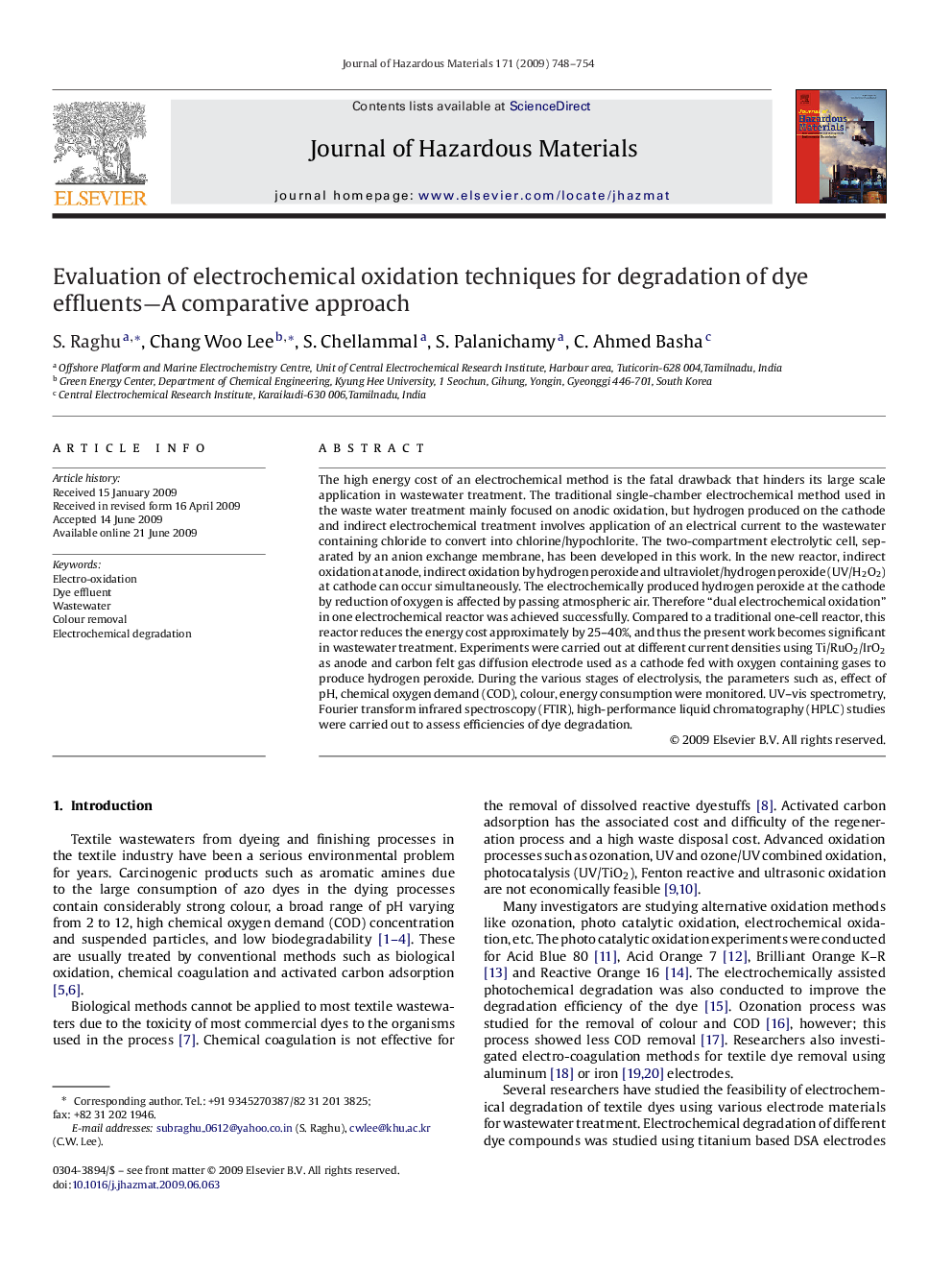| Article ID | Journal | Published Year | Pages | File Type |
|---|---|---|---|---|
| 581198 | Journal of Hazardous Materials | 2009 | 7 Pages |
Abstract
The high energy cost of an electrochemical method is the fatal drawback that hinders its large scale application in wastewater treatment. The traditional single-chamber electrochemical method used in the waste water treatment mainly focused on anodic oxidation, but hydrogen produced on the cathode and indirect electrochemical treatment involves application of an electrical current to the wastewater containing chloride to convert into chlorine/hypochlorite. The two-compartment electrolytic cell, separated by an anion exchange membrane, has been developed in this work. In the new reactor, indirect oxidation at anode, indirect oxidation by hydrogen peroxide and ultraviolet/hydrogen peroxide (UV/H2O2) at cathode can occur simultaneously. The electrochemically produced hydrogen peroxide at the cathode by reduction of oxygen is affected by passing atmospheric air. Therefore “dual electrochemical oxidation” in one electrochemical reactor was achieved successfully. Compared to a traditional one-cell reactor, this reactor reduces the energy cost approximately by 25-40%, and thus the present work becomes significant in wastewater treatment. Experiments were carried out at different current densities using Ti/RuO2/IrO2 as anode and carbon felt gas diffusion electrode used as a cathode fed with oxygen containing gases to produce hydrogen peroxide. During the various stages of electrolysis, the parameters such as, effect of pH, chemical oxygen demand (COD), colour, energy consumption were monitored. UV-vis spectrometry, Fourier transform infrared spectroscopy (FTIR), high-performance liquid chromatography (HPLC) studies were carried out to assess efficiencies of dye degradation.
Related Topics
Physical Sciences and Engineering
Chemical Engineering
Chemical Health and Safety
Authors
S. Raghu, Chang Woo Lee, S. Chellammal, S. Palanichamy, C. Ahmed Basha,
